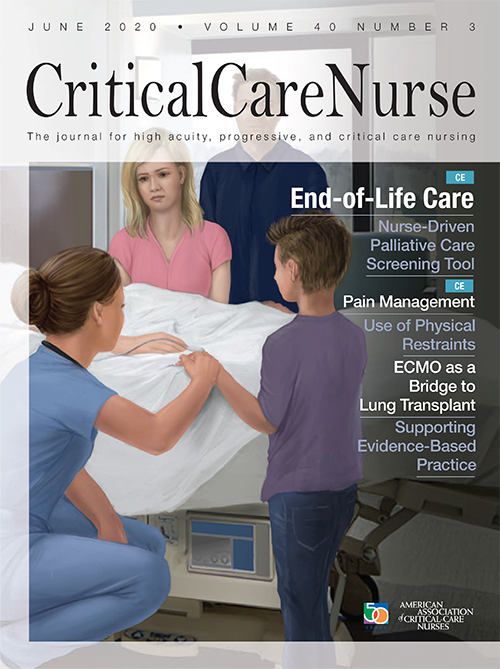The pandemic has not only highlighted existing nursing shortages but also created unique concerns of its own, as surge planning strains already stretched staffing resources. In addition, the nursing profession grew especially concerned about the health and safety of its workforce, specifically the consistent availability of critical care nurses and sufficient supplies of personal protective equipment (PPE) throughout the pandemic.
“Answering the Call: Impact of Tele-ICU Nurses During the COVID-19 Pandemic” describes how Atrium Health’s tele-ICU quickly adjusted its patient-centered focus to include supporting and protecting bedside nurses caring for patients in isolation, as part of the system’s planning and preparations for the pandemic. The article is published in the August issue of Critical Care Nurse (CCN).
The virtual critical care unit (VCC) has been providing tele-ICU care in Atrium Health’s network of hospitals and ICUs across the Carolinas since 2013. The VCC uses real-time, two-way audio and high-definition video communication to hundreds of critical care beds and via mobile carts in two emergency departments in the health system. The VCC team has more than 80 board-certified tele-intensivists and 40 board-certified critical care nurses.
“We modified workflows, deployed home workstations and changed staffing models with the goal of providing additional clinical support to bedside colleagues while reducing exposure time and conserving PPE,” said co-author and VCC program coordinator Sandy Arneson, MSN, RN, CCRN-E. “VCC capabilities facilitate both a high level of care for patients and protection for frontline providers.”
As part of the system’s surge preparations, VCC coverage was quickly expanded to the facilities that were first to admit patients diagnosed with COVID-19. At these facilities, the VCC expansion enabled conversion of existing hospital beds to critical care beds, more than doubling capacity for ICU-level care.
The infrastructure expansion included deploying telemedicine mobile carts throughout the system. Many non-VCC providers were granted access to its tele-ICU software to facilitate team-based care of patients with COVID-19, and handheld tablets were distributed to increase family-centered visitation and virtual communication.
To assure consistent coverage in the event of required quarantine or exposure, a team of VCC nurses, as well as members of the VCC operational and leadership team received home workstations with laptops and additional monitors.
Workflow modifications help reduce time spent in isolation rooms and thereby reduce the risk of exposure for frontline caregivers.
The COVID-19 pandemic had the potential to exacerbate any staffing challenges, and the VCC team provided an additional layer of clinical support to nurses at the bedside. At the push of a button, bedside clinicians had immediate access to experienced ICU nursing support.
This ease of access also gave bedside nurses peace of mind, knowing that changes in a patient’s status would be brought to their attention quickly, even when they were not in the same room. For example, a VCC nurse could perform clinical documentation while the bedside ICU nurse conducted a physical patient assessment, a task which could be challenging in full PPE.
As the American Association of Critical-Care Nurses’ (AACN) bimonthly clinical practice journal for acute and critical care nurses, CCN is a trusted source of information related to the bedside care of critically and acutely ill patients.
The article is part of AACN’s growing library of clinical resources related to caring for critically ill patients with COVID-19, including a free self-paced course, “COVID-19 Pulmonary, ARDS and Ventilator Resources.” The COVID-19 resources also include free pocket cards, webinars, procedure manual excerpts and journal articles.
Access the article abstract and full-text PDF by visiting the CCN website at http://ccn.aacnjournals.org.
About Critical Care Nurse: Critical Care Nurse (CCN), a bimonthly clinical practice journal published by the American Association of Critical-Care Nurses, provides current, relevant and useful information about the bedside care of critically and acutely ill patients. The award-winning journal also offers columns on traditional and emerging issues across the spectrum of critical care, keeping critical care nurses informed on topics that affect their practice in acute, progressive and critical care settings. CCN enjoys a circulation of more than 120,000 and can be accessed at http://ccn.aacnjournals.org/.
About the American Association of Critical-Care Nurses: For more than 50 years, the American Association of Critical-Care Nurses (AACN) has been dedicated to acute and critical care nursing excellence. The organization’s vision is to create a healthcare system driven by the needs of patients and their families in which acute and critical care nurses make their optimal contribution. AACN is the world’s largest specialty nursing organization, with more than 120,000 members and over 200 chapters in the United States.
American Association of Critical-Care Nurses, 27071 Aliso Creek Road, Aliso Viejo, CA 92656; 949-362-2000; www.aacn.org; facebook.com/aacnface; twitter.com/aacnme
Original post https://alertarticles.info


